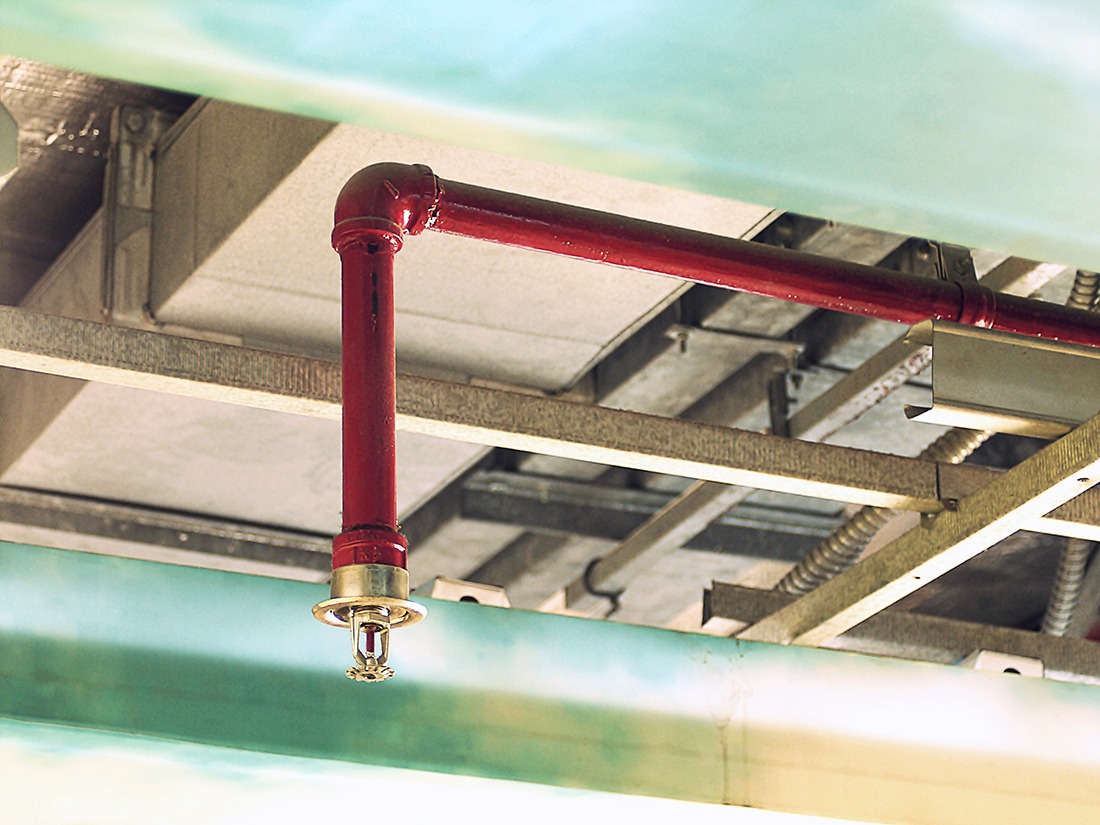As part of our series on MEP services and how BIM can help with that, we also want to look closer at one of our newer services – fire protection.
Our fire protection services were launched in response to the fact that we have worked with many MEP contractors in the past, and have sometimes found ourselves in a situation where the fire sprinkler designs have not been completed in 3D. This has meant we could not coordinate them accurately with the MEP services.
There has been an increased focus on fire sprinkler systems in recent months, with tragedies such as the Grenfell Tower disaster, meaning that legislation surrounding fire controls are getting stricter – and rightly so. But how can companies ensure their employees and buildings are protected, and their sprinkler systems compliant with the relevant sprinkler standards?
Following on from the Grenfell Tower disaster, the London Fire Brigade recommended that all high-rise residential buildings were fitted with fire sprinklers, and the commercial sector has taken this on board too. In the wake of this effort to get fire suppression right, building managers need to be able to demonstrate that their sprinkler systems and related safety programmes are up to scratch, and able to provide comprehensive protection for those within the building.
It is interesting to note that, despite this new focus on sprinkler systems, the actual technology behind them has gone unchanged for decades. When the temperature within a building reaches more than 68 degrees, the bulb in the nozzle of the sprinkler system will fracture, allowing water to be discharged. The quicker the response to this rise in temperature, the better – and this technology has proved itself time and time again to be the best way to control or extinguish a fire as quickly as possible. A well-maintained sprinkler system is therefore essential to prevent fires from getting out of hand, and the basic components within it should be regularly tested to prevent further damage to the entire system.
One of the critical things to get right when it comes to fire sprinklers is the installation – making sure they are integrated correctly into the wider ecosystem within the building. BIM (building information modelling) can help with this as it allows all of the elements of the sprinkler system to collaborate together in one central location. Fire sprinkler company personnel know a lot about the dimensions and sizing of the sprinkler elements, and how they can sustainably be used within construction projects. Inputting this knowledge into a BIM system allows for a 3D design to be created according to the specific programmed configuration and different standards involved.
Here at The CAD Room, our 3D Modelling BIM team have extensive experience of modelling the sprinkler elements and so we can provide you with the most precise fire sprinkler design and possible installation direction as well. This not only reduces the risk of rework and change order identification but can also help with trade coordination between designers, engineers and contractors in the construction phase.
The benefits of using BIM for your fire protection and sprinkler system design include:
- Distribution of the sprinkler heads in an easily predefined way
- Best routing of the sprinkler system chosen through the use of visually depicted routing options
- Pre-calculation of pipe diameters according to the different standards
- Fire protection system modification at any stage of the project
- Clash analysis amongst the different coordinating models of the fire protection system
If you would like to find out more about our BIM fire protection systems service, please get in touch with us on 0161 427 0348 or email us at office@thecadroom.com

